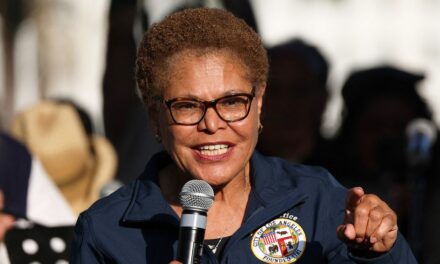In a controversial decision, the Trump administration has announced its policy to disregard the usage of gender pronouns in communications with reporters. This directive has generated a wide array of responses, ranging from commendation to severe backlash. As the nation continues to grapple with issues surrounding identity and inclusivity, this decision highlights the deep divisions within American society regarding the recognition of gender identity.
According to sources within the White House, the new stance aims to maintain a focus on issues rather than individual identities. Staff members have reportedly been instructed to avoid any pronouns that denote gender in their correspondence, believing that doing so will create a more neutral environment in press interactions. “We are writing policies that reflect the core values of our administration,” a senior official stated. “The focus should strictly remain on the policies and how they impact Americans, rather than on the individual identities of those reporting them.”
This policy marks a significant departure from the inclusive practices that have gained traction in many other areas of society, including the media and corporate sectors. Many organizations have embraced gender-neutral pronouns, and the practice is often seen as a reflection of respect for individuals’ identities. Critics argue that the White House’s decision undermines essential aspects of inclusion and respect, especially for marginalized communities that continue to fight for recognition.
Advocates of this policy within the administration have suggested that such a move is necessary to maintain a standard of objectivity and professionalism in communications. They contend that focusing on pronouns introduces unnecessary distractions that divert attention from substantive policy discussions. This perspective is typical of certain conservative viewpoints that prioritize traditional values and question modern approaches to gender identity.
However, advocates for LGBTQ+ rights have not remained silent in the face of this policy shift. Many argue that ignoring gender pronouns in communications invalidates the existence and experiences of transgender and non-binary individuals. The Human Rights Campaign issued a statement expressing their disappointment, asserting that the administration is effectively dismissing the identities of countless Americans. “This is yet another attempt to erase the identities of individuals who simply seek to be recognized for who they are,” the statement read. “It perpetuates a culture of exclusion that has no place in a country founded on the principles of equality and respect.”
In response to the criticism, White House representatives have reiterated that the policy is not an attempt to diminish anyone’s identity but rather to promote a sense of unity through shared issues. “We want to ensure that everyone feels welcome at the table, and that discussions are centered around what truly matters,” stated one official. They claim this policy is in accordance with the Administration’s broader vision of supporting traditional values while still promoting a country where everyone can prosper.
Notably, this decision echoes broader national trends, as many states and organizations have also debated the inclusion of gender-neutral language in everyday practice. In several states, lawmakers have introduced bills aimed at restricting the use of gender-neutral pronouns in state documents and public communications. Supporters of such measures often frame their arguments around the preservation of traditional language, and have garnered significant political support among certain conservative factions.
Public opinion, however, remains mixed. A poll conducted by a major news outlet indicated that while some Americans support the administration’s approach, a significant portion view it as an outdated response to ongoing cultural evolution surrounding gender identity. The conversation surrounding gender-neutral pronouns has exploded in recent years, resulting in a cultural shift where many individuals and institutions actively engage in respectful acknowledgment of identity preferences. Awareness campaigns have encouraged people to introduce themselves using their preferred pronouns, creating arguably more inclusive environments.
This most recent policy announcement arrives during a time of heightened focus on issues affecting the LGBTQ+ community. The ongoing debates surrounding gender identity have found their way into classrooms, suburban neighborhoods, workplaces, and the public square, shifting conversations about respect, comprehension, and dignity. Proponents for LGBTQ+ rights believe there is still a long way to go, especially in mainstream political discourse. Several high-profile incidents, such as discrimination cases and protests by various LGBTQ+ advocacy organizations, have propelled these conversations into the national spotlight, demonstrating a necessity for ongoing dialogue regarding acceptable conduct in public and private exchanges.
As a result of the Trump administration’s stance, some reports surge to the forefront, drawing attention to arguments against rigid binary gender constructs. For many, recognizing non-traditional identities is not simply about politics; it’s reflective of a more profound understanding of human experiences. Critics suggest that policies like that of the Trump administration could reinforce negative attitudes that harm the LGBTQ+ community, leading to further marginalization. The weight of language is significant, and the choice to either validate or invalidate identities holds ramifications that extend beyond mere communication—into social relationships and individual well-being.
In reaction to the administration’s policies, several media organizations have initiated discussions about their own practices and the language used in their reports. Some have confirmed their commitment to inclusive language by allowing reporters to use preferred pronouns in their emails and other communications, regardless of directives from the White House or other governing bodies. Organizations argue that this acknowledgment is essential for respecting the identities of individuals they engage with, which can lead to more authentic and meaningful reporting.
The debate surrounding the White House’s directive is not limited to its internal ramifications; it reflects broader conflicts within American society. The split over gender pronoun usage illustrates the chasm between cultures and ideologies, which impacts everything from personal interactions to national policy discussions. The ongoing discourse may potentially redefine how institutions address inclusivity and identify language in future practices, shaping the relationship between political entities and society at large.
One can speculate what this controversial policy means not only for White House communications moving forward but also its implications for how issues associated with gender identity will continue to evolve in national discussions. As the nation marches forward into this complex terrain, it becomes increasingly important for all stakeholders—reporters, officials, citizens—to engage thoughtfully in the conversation around identity and representation.
In conclusion, the Trump administration’s policy of ignoring gender pronouns in correspondence has undoubtedly polarized opinions, sparking praise and fierce criticism alike. The conversations emerging from this decision reflect the larger context of ongoing societal debates regarding identity, respect, and inclusion. Whatever the future holds, one truth remains clear: the discourse around gender identity and the language we use in our interactions is more vital than ever in the fabric of societal values.
































